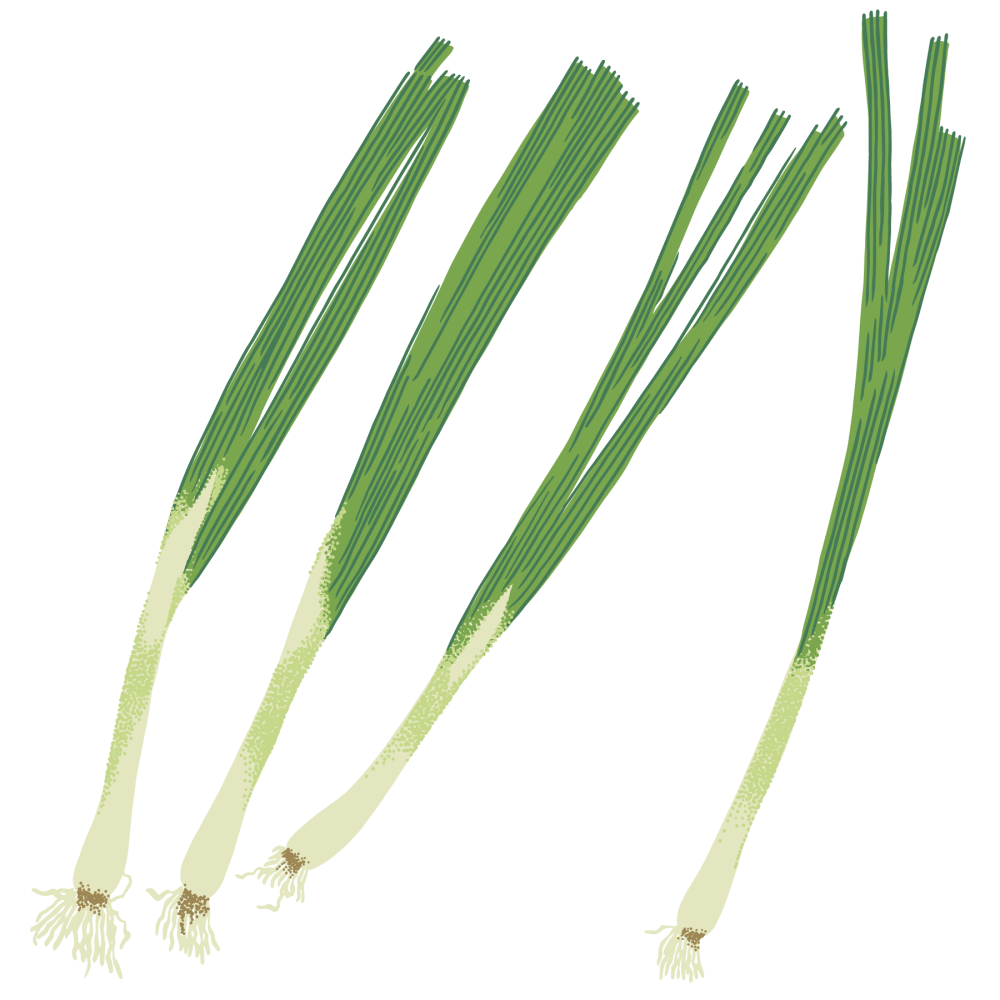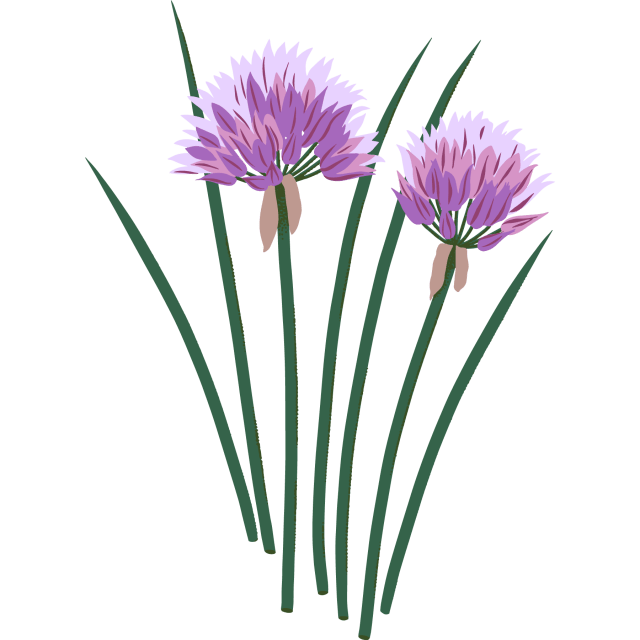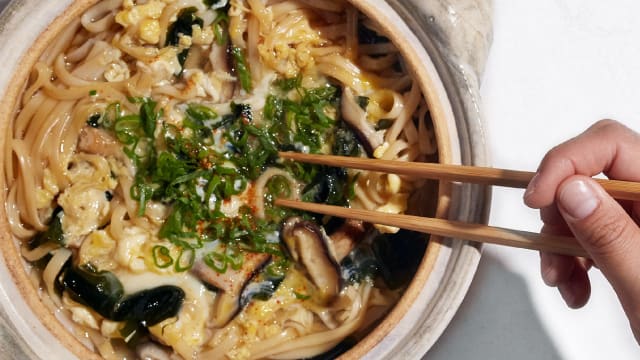Scallion

Latin name: Allium cepa var. cepa, A. fistulosum
Other names: green onion, salad onion
Uses: herb, vegetable
What are scallions?
Scallions are one of several non-bulbing onions eaten for its leaves, and like the other alliums, they universally improve pretty much any savory dish they touch.
Why are scallions healthy?
Besides carotenoids, calcium, potassium, and antioxidants, scallions are an abundant source of K, C, and several B-complex vitamins. They may also help to lower cholesterol.
What do scallions taste like?
Scallions have the peppery bite of other onions, but slightly sweeter and grassier. The white part has a firmer texture and more prominent onion flavor than the hollow green leaves. Though they’re larger than a chive and lack the bulb of a spring onion, they’re all fairly interchangeable in a pinch.
How do I use scallions?
In Catalonia, Spain, calçots are charred over open fire until silky-soft and then dragged through a thick romesco-type sauce called salvitxada — a testament to the fact that scallions love direct flame, red peppers, and garlic. Throw them on the grill or roast them in a hot oven, and they’ll sweeten up. Cooked scallions also love cheese and white carbs — add them to rice dishes or mashed potatoes to cut through the starch.
What do scallions pair well with?
They’re beautifully suited to Chinese pancakes and gingery sauces for dumplings and noodles; when raw, they brighten up the earthy-nutty flavors of soy sauce, sesame oil, and miso; they add grassiness to the tangy, fermented funk of kimchi; and they play well with dill and parsley in sour-creamy Russian cucumber-tomato salads. Use them with cilantro in Mexican dishes and Indian chutneys (especially with mint).
Where do scallions grow?
Technically, basic onions can be harvested before they form bulbs and eaten as a scallion, but the scallions that don’t bulb (A. fistulosum) are native to China but have been grown elsewhere throughout East Asia for millennia. China is still the top producer globally, but the United States isn’t far behind.
How to buy scallions:
Look for firm specimens with clean roots at the white end and bright green leaves without wilted tips. To extend their life in your refrigerator, remove the tie or rubber band, wrap the bunch in a damp paper towel, and keep them in a produce bag in the vegetable drawer.
Fun scallion fact:
Anyone who took up windowsill gardening at the beginning of the COVID-19 pandemic can attest to the ease with which scallions can be grown. When cooking with scallions, save an inch or so of the white part with the roots attached and place the root end in a glass of water. Within a week or two green shoots will grow out from the center.





